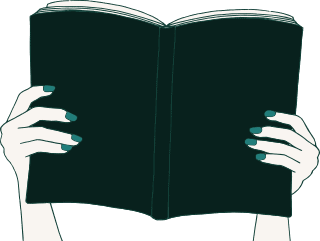Duet met valse noten (1983) started as a diary when Bart Moeyaert was twelve years old. When it was discovered by an older brother, Moeyaert transformed it into a novel about first love. Young authors who use experiences and desires prompted by real life as material for stories are often considered experts on such matters. Given the fact that they are young themselves, they are said to attract readers in a special way. Texts by young authors are often adjusted and marketed by adults working in the field. For some researchers, such adult interferences impede the authenticity of the young author’s voice. When examining the writing process of Duet met valse noten, it appears that quite a few people had a say in adjustments to the manuscript, including young people. Apparently, Moeyaert himself was not happy with some revisions, although they did influence his development as a poetic writer.
Joosen, Vanessa. ‘Writing when Young: Bart Moeyaert as A Young Adult Author’.
European Journal of Life Writing, vol. 10, 2021, pp. BB65–BB83.
doi: 10.21827/ejlw.10.38163
How can you show which ideas regarding age are passed on in and via children’s using digital tools, among other methodologies? A first step is the assembling of digitised texts, which we acquired thanks to publishers, authors and the DBNL. Those texts generate masses of data, which means that it comes down to making choices. We looked into how often characters from certain age groups are depicted speaking in books, and whether differences are to be found regarding gender. We also wanted to find out which topics these characters talked about, and whether differences in age could be revealed. Books by Bart Moeyaert and La Belle Sauvage by Philip Pullman formed touchstones for these first steps. The observations and hypotheses that were the result of this particular study serve as guidelines for further research.
Joosen, Vanessa. ‘Constructing Age for Young Readers’.
International Research in Children’s Literature, vol. 14, no. 3, 2021, pp. 252–268.
doi: 10.3366/IRCL.2021.0409
Age determines the form and content of children’s books in many ways. People havexed ideas about what is suitable for a particular age and what is not, and digital tools can help to map and ask questions about such age norms on a large scale. For this project, the computer ‘read’ 32 Dutch-language children’s books published between 1975 and 2018, and it appears that explicit comments are often made about age in children’s books. Not only do we pay attention to childhood in the project, other life stages are explored as well. It seems that children’s books guard age norms the most, but these comments are often coloured by conflicts, humour, and irony.
Joosen Vanessa. ‘Te kinderachtig voor de kinderen? Leeftijdsnormen in jeugdliteratuur digitaal onderzocht’.
Vooys: tijdschrift voor letteren, vol. 37, no.3, 2019, pp. 1–9.
